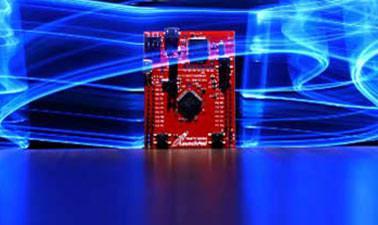MOOC List is learner-supported. When you buy through links on our site, we may earn an affiliate commission.

MOOC List is learner-supported. When you buy through links on our site, we may earn an affiliate commission.
This is part one of a two part sequence. Together these are hands-on, learn-by-doing courses that show you how to build solutions to real-world problems using embedded systems. In this course, we take a bottom-up approach to problem solving, building gradually from simple interfacing of switches and LEDs to complex concepts like a microcontroller-based pacemaker, digital lock, and a traffic light controller. We will present both general principles and practical tips for building circuits and programming the microcontroller in the C programming language. You will develop debugging skills using oscilloscopes, logic analyzers, and software instrumentation. Laboratory assignments are first performed in simulation, and then you will build and debug your system on the real microcontroller. At the conclusion of this part 1 you will possess the knowledge to build your own traffic light controller from the ground up.
This is the fourth time we have offered this course. Since the reviews have been overwhelmingly positive we do not plan major changes over the previous offerings of the course. We did however break the large class into two smaller classes. There are eight labs in part 1 and six labs in part 2. Students can pick and choose a subset of labs to achieve certification. The three labs that students found most rewarding in this part were designing the software algorithm for a demand pacemaker, interfacing switches and LEDS, and the finite state machine traffic light controller.
To complete this course, you will be required to purchase a Texas Instruments TM4C123 microcontroller kit and a few electronic components.
This microcontroller has a state-of-the-art ARM Cortex-M4 processor.
What you'll learn
- Understanding of embedded systems using modular design and abstraction
- C programming: considering both function and style
- Build and test circuits with switches, LEDs, resistors, potentiometers, and liquid crystal displays
- Synchronizing hardware and software input/output with switches, lights, sound, sensors. motors, and liquid crystal displays
- Learn how to solve problems using a finite state machine
- Debug using oscilloscopes, logic analyzers, and software instrumentation
- Learn how to read a data sheet
- Construct traffic light controller
Syllabus
The best way to understand what you will learn in this class is to list the labs you will complete and the example projects we will build. You will complete each lab first in simulation and then on the real board. For each module we will design a system and you will build and test a similar system.
Module 1: Welcome and introduction to course and staff
* Module 2: Fundamental concepts: numbers, computers, and the ARM Cortex M processor *
Lab 2. Run existing project on LaunchPad with switch input and LED output
* Module 3: Electronics: resistors, voltage, current and Ohm’s Law _**
* Module 4: Digital Logic: transistors, flip flops and logic functions *
Lab 4. Debug a system with two inputs and two outputs
* Module 5: Introduction to C programming *
Lab 5. Write a C function and perform input/output
* Module 6: Microcontroller Input/Output *
Lab 6. Write C software that inputs from a switch and toggles an LED output
* Module 7: Design and Development Process *
Lab 7. Write C functions that inputs from a switch and outputs to two LEDs, which is a virtual pacemaker
* Module 8: Interfacing Switches and LEDs *
Lab 8. Interface an external switch and LED and write input/output software
* Module 9: Arrays and Functional Debugging *
Lab 9. Write C functions using array data structures that collect/debug your system
* Module 10: Finite State Machines *
Lab 10. Interface 3 switches and 6 LEDs and create a traffic light finite state machine
MOOC List is learner-supported. When you buy through links on our site, we may earn an affiliate commission.
MOOC List is learner-supported. When you buy through links on our site, we may earn an affiliate commission.
